A different way to think about visitor experience.
In the cultural sector, there is a lot of talk about change. Whether you are a museum, conservatory or library, over the last 10-15 years your service and operational models have changed in response to many factors. Be they broader outside influences affecting the change (demographic shifts, the impact of new technologies) or internal ones (content relevance, new revenue streams) your traditional role of collecting, preserving and sharing some type of collection has shifted to one where you are playing an increasing role in fostering more social connectivity and a different kind of interaction with what you have to offer consumers. With so many more options vying for their attention, how do you differentiate yourself?
Making the Emotional Connection
Above all else, at a fundamental and universal human level, visitors are really seeking an emotional connection to a place and opportunities to form positive memories through shared experiences with other people. It’s not just about the collection.
Yet, despite this shift, the visitor experience at cultural institutions is most often discussed in terms of metrics and data in relation to the artifacts for which the institution is a custodian or for the services they provide. As much as I am interested in, and believe in the importance of, the quantitative and functional facets of the visitor experience I am especially interested in a qualitative one, the facet you might call the hidden dimension of the visitor experience.
While this “hidden dimension” is much more difficult to measure and give shape to, it provides the emotional connections that will ensure a return visitor, one who will spend more time with you while they are there because you’ve engaged them in a multi-sensory way at a profoundly human level. In architecture and design, we call this phenomenon a "sense of place” - characteristics that make a place special or unique and foster authentic human attachment, belonging, and memory formation. By focusing on creating this unique sense of place at your institution, and fostering connections among other humans, you will, in turn, bolster the appreciation and experience of your artifacts and services, be they art, horticulture, or information.
In order to realize a true sense of place, we in our practice at DesignGroup, design buildings from the inside out, centered on the personal experiences of human beings and driven by the mission of our clients. In doing so, the buildings we design are a direct reflection of the personalities and aspirations of our clients and the customers they serve. I’d like to share just a couple of the many considerations we think about when designing with a different kind of visitor experience in mind.
Choreography - The Whale
One defining feature of our work is how we choreograph the movement of humans through space and time by creating an unfolding narrative experience as a visitor moves from space to space to allow for discovery, wonder, surprise, and pause. In a well-choreographed building the experience shouldn’t feel contrived, it should just feel right. For most people, though, the experience of a space’s quality occurs at an unconscious level - you might not be able to pinpoint why a space is memorable or makes you feel good, you just know it does. However, in a well-designed environment, intentional design cues play the central role in how you experience a space.
I have a vivid childhood memory of the first time I walked into the Hall of Ocean Life at the American Museum of Natural History in New York City during an elementary school field trip.

While it was incredible to see a blue whale hanging from a glass ceiling, what is more incredible to me in retrospect was the choreography that got us there: after winding through formal preceding rooms we passed through a low, dark entryway and emerged into an enormous, blue-lit room with a soaring backlit glass ceiling. Suspended from that delicate ceiling, and over a deep blue floor, was the floating blue whale, carefully illuminated to enhance both its enormousness and buoyancy at the same time. After descending the grand staircase until we were under its body, I lay on the ground under the belly of the whale with my schoolmates, hearts racing yet eerily calm, and staring up in wonder. I didn’t realize it then, but I certainly do now: it is the choreography that gets you - crossing a threshold, the sense of surprise and awe, and then the opportunity to gather and socialize.
Our recently completed Margaret M. Walter Wing Addition to the Columbus Museum of Art also illustrates some of this thinking. Prior to opening I was asked, as one of four artists, to create an experiential map of the museum through a unique lens. The map, entitled "Cinematic Experience: Through the Eye of the Architect" contained a series of key points and scenes that provide a way to experience the Walter Wing addition in the way it was conceived. Since the experience of the building was imagined in the same way a cinematographer imagines a sequence of experiences in the creation of a film, the map reads as a storyboard containing a series of vignettes and framed views tied to key points along an imagined journey.

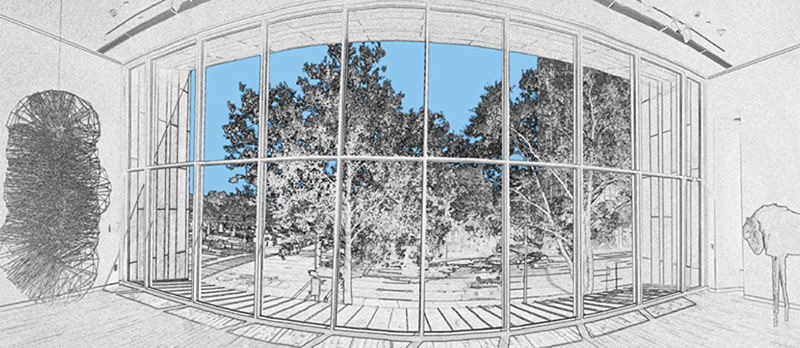
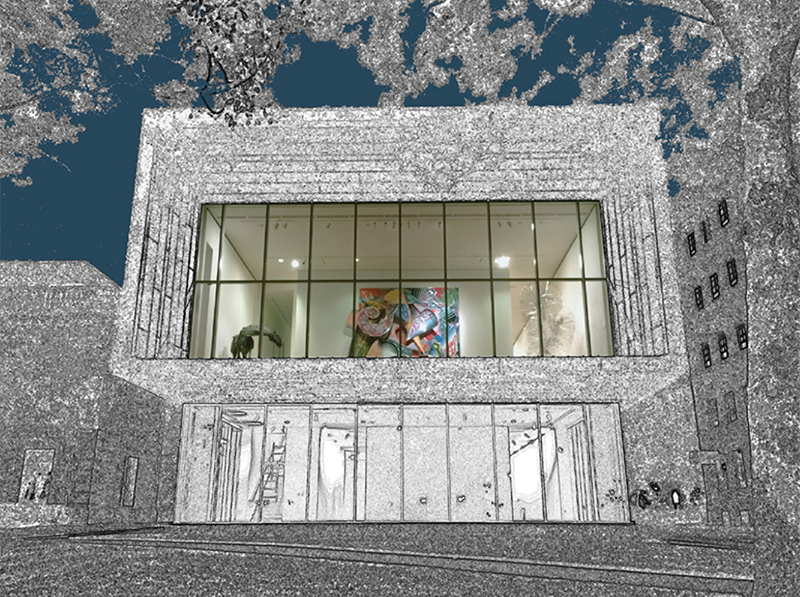
Along your journey, you discover the many other intentional framed views that occur between these designated viewpoints. Through the map experience, we encourage visitors to always ask themselves questions along the way: What do I see or feel when I am at the key points and what is the architect trying to show me?
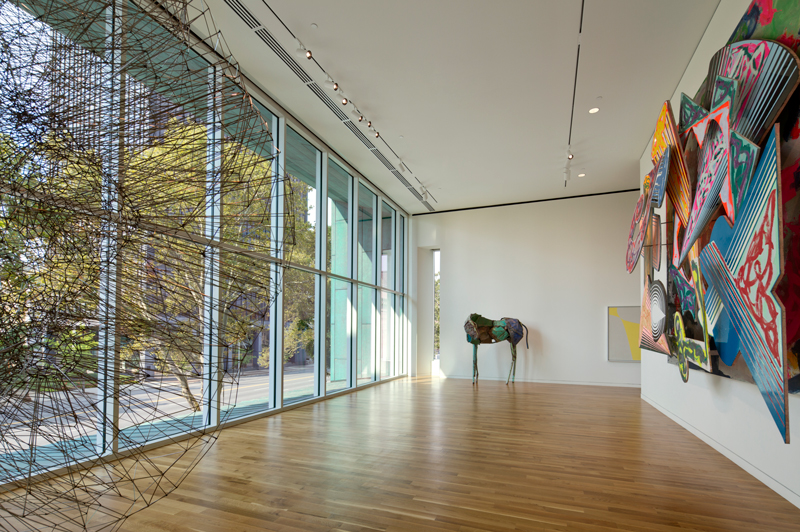
Light - The Oculus
Another defining feature of our work is the unique way in which we use daylight. Natural light is a powerful gift that can create both logical and emotional responses: it illuminates, defines pathways, and creates mood. In our work, we discuss daylight in terms of its poetic impact - the emotional response to the changing conditions of light over the course of the day and the course of the year. We think about how each part of a building responds to different light conditions depending on where the light is coming from, what the light is penetrating through, and what material the light is reflecting off. Every day of the year, the experience is different and year to year, as atmospheric conditions change, you experience light in a new way. While we are thinking about all of this we imagine how the visitor will move through and experience these changing conditions - how they can create moments of quiet, pause and focus or stir up moments of gathering, activity, and conversation.
When I was studying in Rome, I would visit the ancient Pantheon almost every day to experience the poetic power of daylight in architecture.
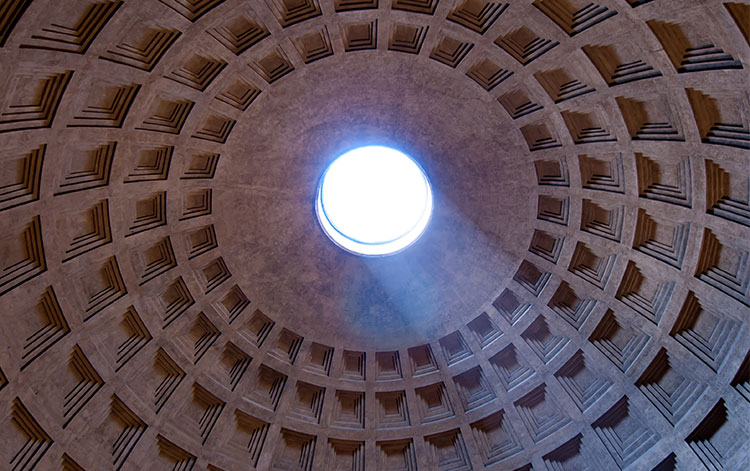
Within the Pantheon, after crossing the threshold and heavy columns of the dark portico, you enter an enormous, round sky-lit room defined by a soaring concrete dome. At the very top of this dome is a round opening in the roof called an oculus. Through this opening, a shaft of light enters the building and creates a disk of light that moves across the floor, walls, and underside of the dome depending on the time of day and the weather conditions. Depending on these factors, the light changes in color and intensity, but also in density - the oculus is open to the elements so rain, mist, snow define the shaft of light when they occur. If it is sunny, the light is crisp, geometric; if it is overcast, the light is diffused, without shape. The light can be warm, bright white, or a muddy gray.
The amazing thing is that it is different almost every day and I would try to head over for a visit whenever I thought the light would be “just right” in color, intensity, and angle. It is a sublime place and even when full of tourists it has an unmistakable quiet to it. I was deeply moved by these early experiences and felt a profound connection to that specific place which I carry with me to this day. Yes, I appreciated the historical significance of the Pantheon; yes, I understood the structural gymnastics required to create a concrete dome; yes I appreciated the geometric perfection of the building proportions, and even the science of light. But I didn’t keep going back to see the Pantheon, the artifact, I went back to experience the place where the ever changing conditions of light inspired a spiritual moment and a need for me to just be there. Whenever I am working on the design of a building or space, I am always trying to channel how that light made me feel and present it back to my fellow human in a new way.
Falling in Love
It is easy for me to take a lot of what I describe for granted because I dream of spaces for a living; most humans unconsciously recall spaces that have created a memory for them. There are places people go to propose to their future spouses for a reason. Do you remember why you chose yours? I proposed to my wife on the campus of Capital University in Columbus, Ohio. Neither of us studied at Capital University. We have no ties to the institution. This is just a place where we used to eat our ice cream on our first dates while sitting under the trees in an historic quad surrounded by old buildings that created a nice outdoor room. It wasn’t an iconic space, it was just one that felt perfect.
Yes, your institution’s focus may be art, history, horticulture or information (or even healthcare, education, workplaces, and places to live). And you may be doing great things to engage visitors with those assets in unique and innovative ways. But, more importantly, your institution is a place where human beings come together to form an emotional connection to a unique, inspiring environment where they can create positive memories through shared experiences.
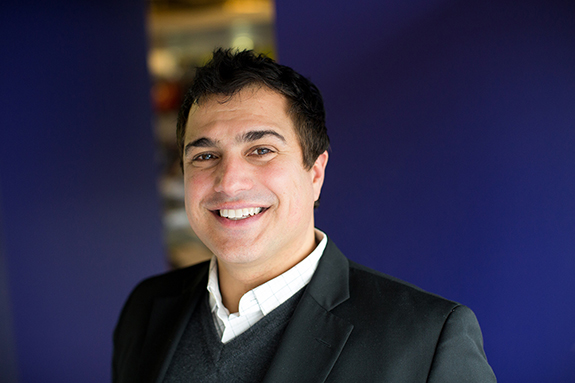
Michael Bongiorno, AIA, LEED AP BD+C // Principal, Senior Designer
Michael Bongiorno is a principal and senior designer at DesignGroup. Michael is a noted local design leader with a focus on community impacting, mission-driven architecture that supports and enhances the fabric of the city and furthers a fundamental belief that great design is the essential building block to vibrant, healthy communities. His work has garnered numerous awards in Ohio, Indiana, and Illinois. His current projects include the Franklin Park Conservatory Master Plan and Education Barn, the City of Columbus’ Coleman Government Center, and The Ohio State University Wexner Medical Center Jameson Crane Sports Medicine Institute. Recently completed award-winning projects include the Columbus Museum of Art Walter Wing Expansion, Battelle Darby Creek Nature Center, the McConnell Arts Center of Worthington, the Grange Insurance Audubon Center, and the John R. Maloney Health and Wellness Center. He serves on the board of trustees of the Greater Columbus Arts Council and founded Columbus’ “Design Week[s]”, while serving on the board of trustees for the Columbus Center for Architecture and Design, where he led leading the award-winning “CBUS Ideabook” and “cbus:FOTO” projects. Michael has presented and written extensively on design and creative placemaking. Michael’s 2012 TEDx Columbus talk, entitled “Looking Over the Overlooked,” took the audience on a journey to discover new ways to re-imagine cities. Born and raised in Brooklyn, NY, he is a cum laude graduate of the prestigious Pratt Institute School of Architecture in New York City and has lived and traveled extensively abroad.

